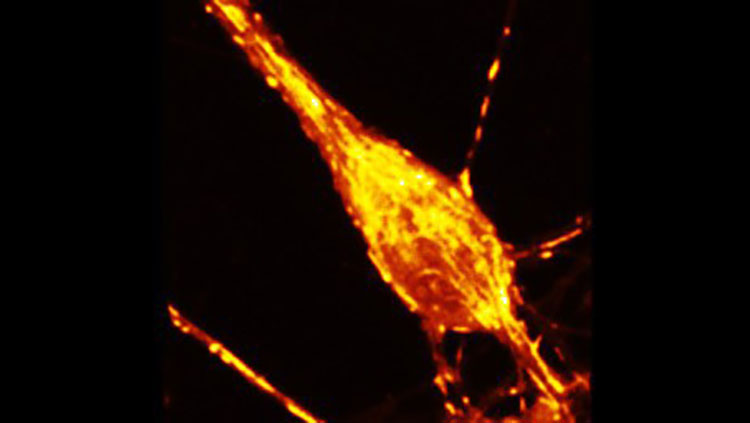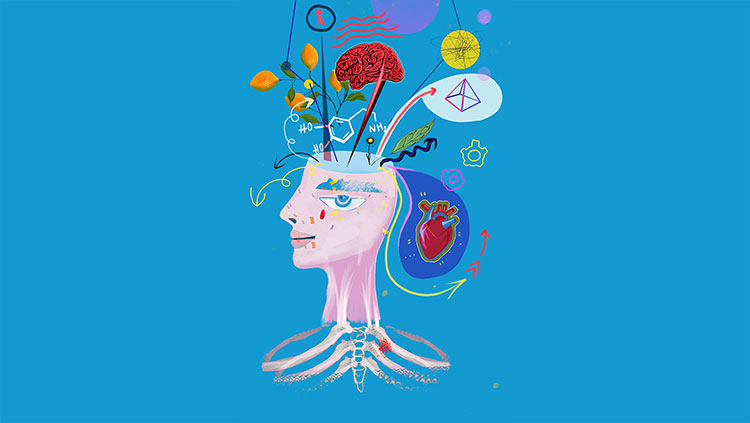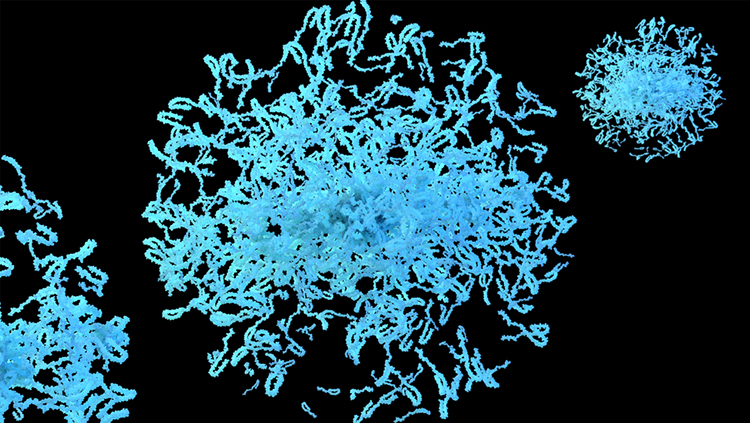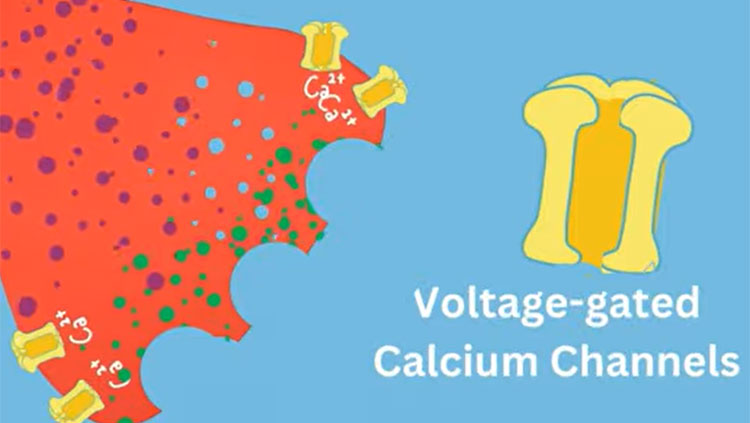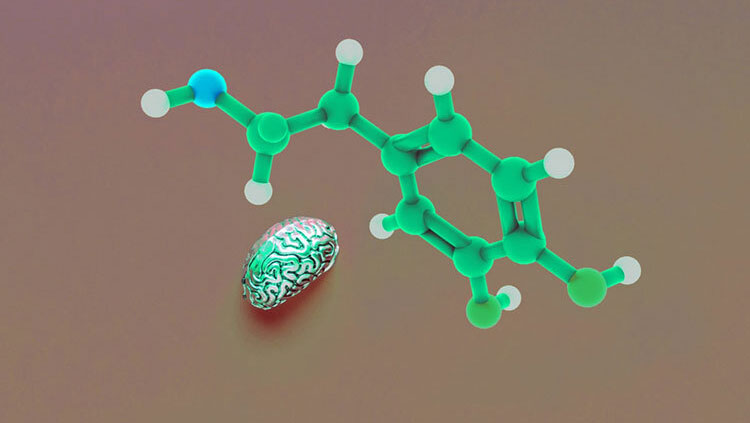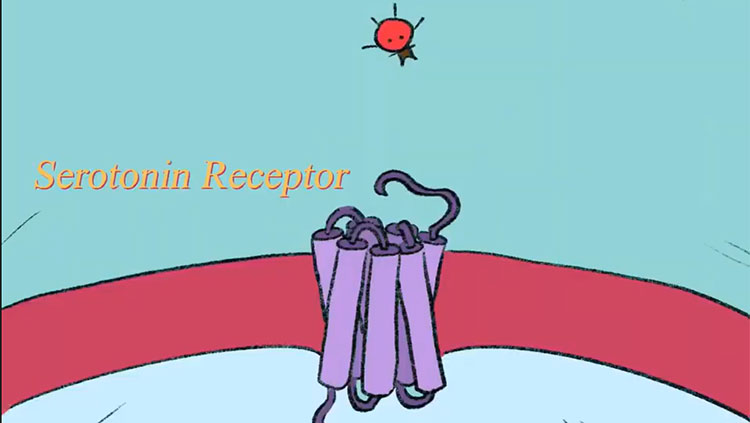Neurons Run on Calcium
- Published20 Feb 2020
- Author Charlie Wood
- Source BrainFacts/SfN
In neurons, calcium is the ultimate multitasker. It helps propagate electrical signals down axons. It triggers synaptic terminals to dump their cargo of neurotransmitters into synapses. And, if that’s not enough, it’s also involved in memory formation, metabolism, and cell growth.
Watching the ebb and flow of calcium ions gives scientists an idea of what’s happening in neurons. To do that, they use special fluorescent molecules that glow when they link up with calcium. This image shows a neuron cell body aglow with calcium.
CONTENT PROVIDED BY
BrainFacts/SfN
References
Ali, F., & Kwan, A. C. (2019). Interpreting in vivo calcium signals from neuronal cell bodies, axons, and dendrites: A review. Neurophotonics, 7(01), 1. doi: 10.1117/1.NPh.7.1.011402
Kawamoto, E. M., Vivar, C., & Camandola, S. (2012). Physiology and Pathology of Calcium Signaling in the Brain. Frontiers in Pharmacology, 3. doi: 10.3389/fphar.2012.00061
Also In Genes & Molecules
Trending
Popular articles on BrainFacts.org


